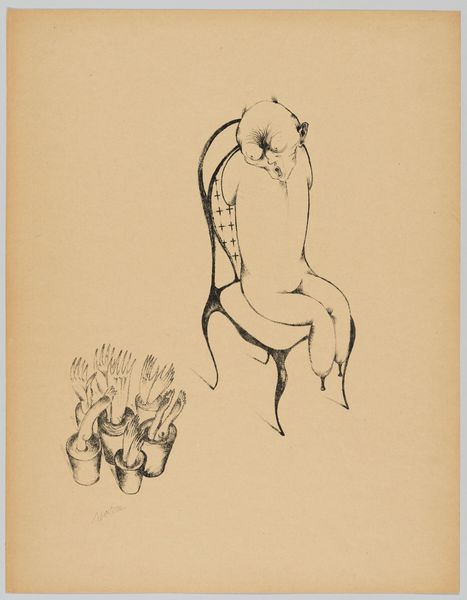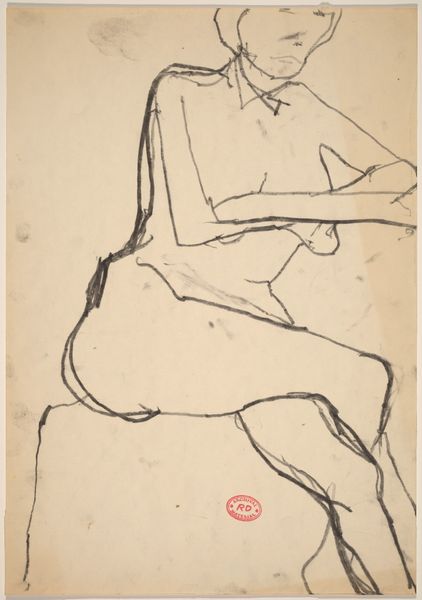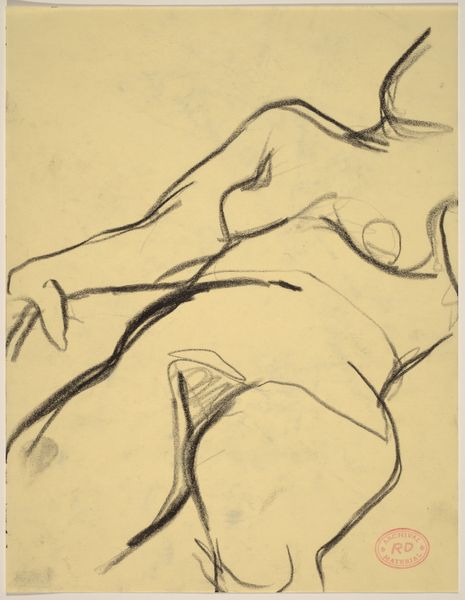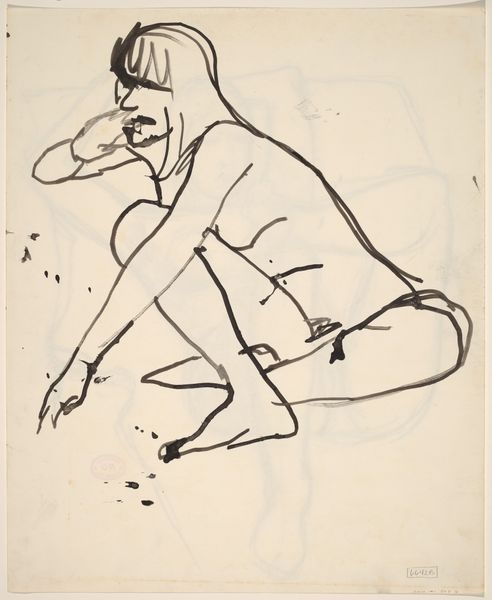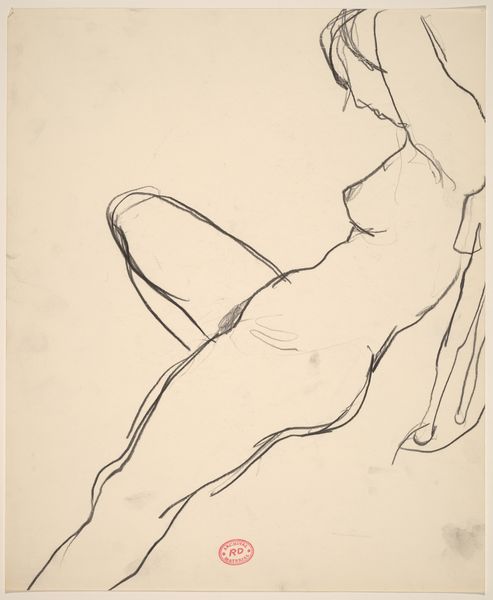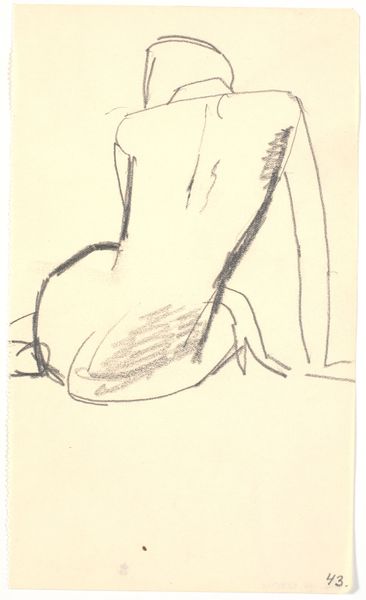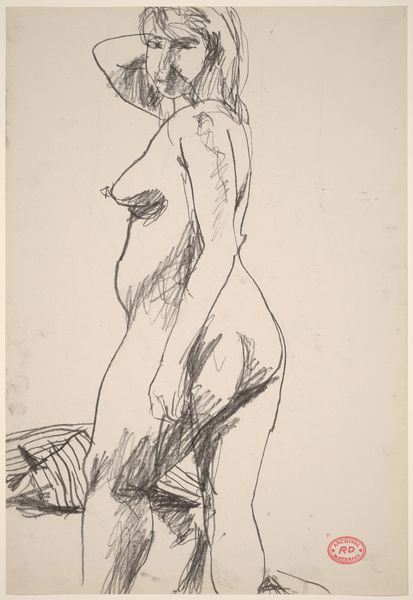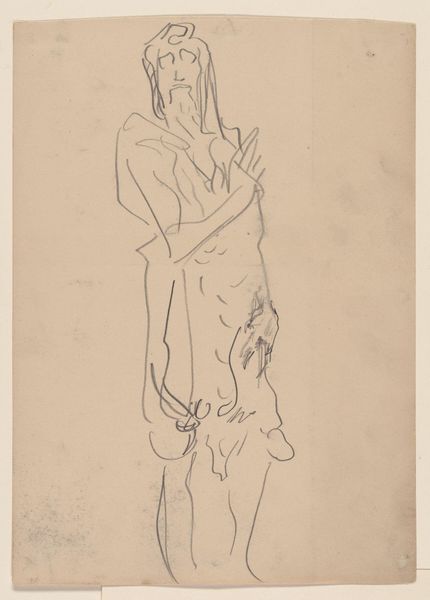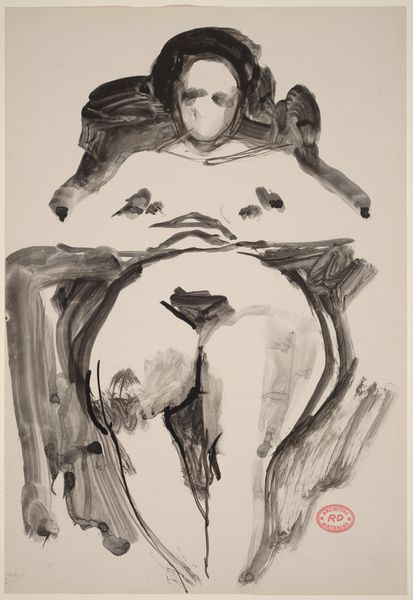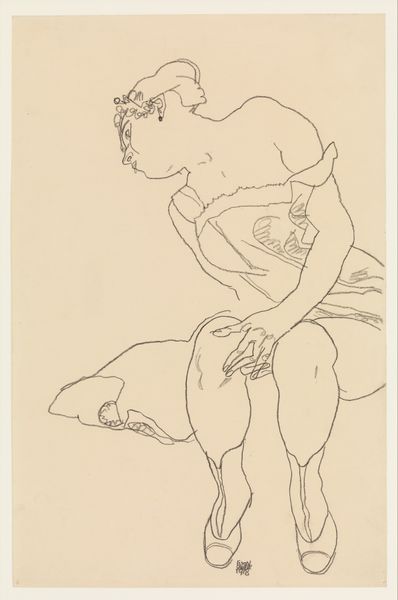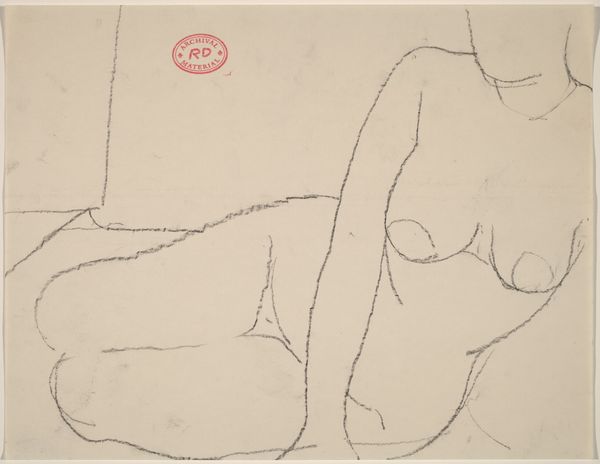
drawing, print, ink
#
drawing
#
ink drawing
# print
#
figuration
#
ink
#
expressionism
#
surrealism
Dimensions: overall: 59 x 45.9 cm (23 1/4 x 18 1/16 in.)
Copyright: National Gallery of Art: CC0 1.0
Curator: Heinrich Hoerle crafted this ink drawing, titled "Hallucinations," in 1920. Its strange combination of figures and starkness definitely leaves an impression. Editor: My initial impression is unsettling, verging on grotesque. There's a palpable sense of unease conveyed through the distorted form of the figure in the chair. Curator: Indeed. The composition uses an austere palette, limiting the colour to monochrome which underscores its raw and rather macabre atmosphere. Notice the interplay between the lines—crisp in places, almost frenzied in others, adding a discordant texture. Editor: Right. Hoerle was operating in the Expressionist and Surrealist realms. The visual distortion here isn't merely stylistic. It likely serves as commentary on post-war psychological trauma, depicting a fractured inner world. The positioning and posture almost render the seated figure inanimate. Curator: Perhaps. The visual language resonates within the artistic movements brewing at the time, when there was immense social and political upheaval. Artists grappled with how to represent a world seemingly turned upside down and where the relationship between figure and its environment was undergoing deep changes. The presence of the containers with severed hand-like appendages further amplifies that disruption of normality. Editor: Yes, the motif of severed hands in pots—what meaning do we assign to that? Are they simply representative of bodily fragmentation and control? And what purpose does their placement serve alongside the figure in the chair? I wonder what Hoerle intended with such graphic symbolism within its historical moment? Curator: These surreal and disjointed arrangements mirror the post-World War I zeitgeist in Germany: an era of extreme instability, poverty, and disillusionment. Hoerle and other artists, then, reflected the breakdown of traditional social norms, a breakdown mirrored in the fracturing of the human form. Editor: A fitting illustration of internal, emotional wreckage experienced after the War and, visually, it speaks to similar explorations by Grosz, Dix and other German artists responding to societal fragmentation. Its power is as resonant today as I'm sure it was back then. Curator: Absolutely. Its formal strategies help capture those sentiments about chaos, disillusion and mental disquiet and remain quite remarkable, given the historical and political climate where Hoerle produced it.
Comments
No comments
Be the first to comment and join the conversation on the ultimate creative platform.
